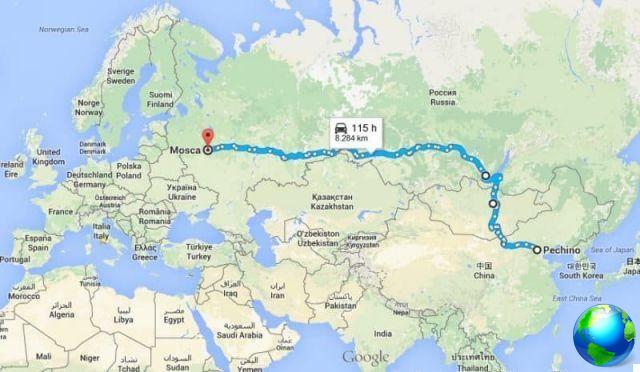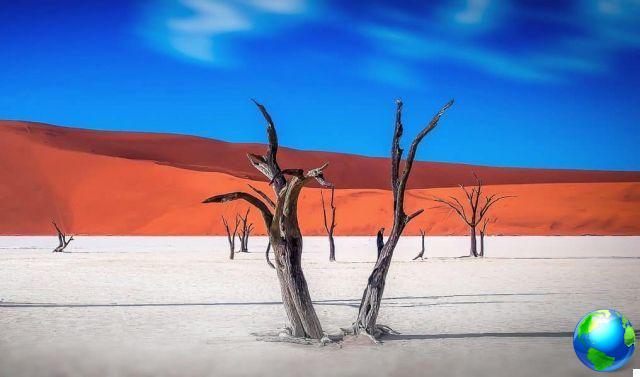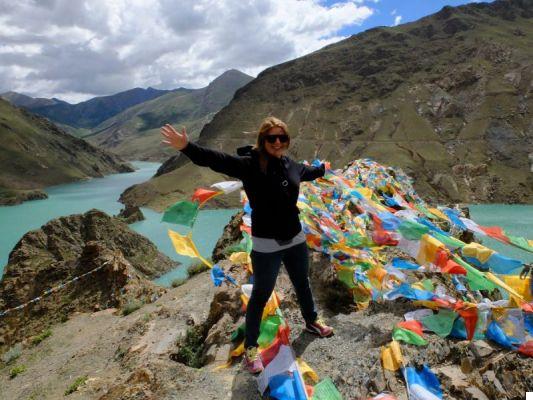
Where and for how many days to go: the itinerary
Tibet is a very large country and you must necessarily select a part, you should have months (and a lot of money) to shoot it all. We had 10 days and we opted for the “classic” tour, a loop tour starting from Lhasa and arriving at Everest Base Camp passing through Gyantse, Shigatse e Tingri . This is the itinerary in detail:
- Arrival in Lhasa
- Lhasa
- Lhasa
- Lhasa - Gyangtse (passing through Yamdrok Yumtso Lake and the glacier)
- Visit of Gyangtse and transfer to Shigatse
- Visit of Shigatse and transfer to Tingri (via Sakya Monastery)
- Dingri – Everest Base Camp
- Everest Base Camp-Dingri – Shigatse
- Shigatse –Lhasa
- Return flight to China
When to go to Tibet
For obvious climatic reasons the best time to go to Tibet is summer, from June to September. Unlike Nepal (which suffers from monsoons), here the monsoons don't come because they are blocked by the Hymalaian chain. In summer it rains very little (in Tibet, in general, rainfall is always low), the sky is incredibly blue, and the temperatures are very pleasant. During the day you wear a t-shirt (there are more than 20 °) and in the evening with a sweatshirt; the only exception is the Everest base camp, to stay there you need a duvet and in the evening it can get very cold. In case you want to do one Everest expedition instead you have to go in April / May. Remember that the sun is really strong! Sunscreen and sunglasses are essential.
Health insurance is required
In Tibet our health coverage is not worth it. My advice is to always take a classic medical-luggage insurance that can cover you during the trip. I am very happy with many insurance companies, a site that compares the policies of different companies and proposes the most convenient policy for that particular trip. To do this you will have to enter the data relating to your trip (country, duration, etc.) and they will send you an email with the best proposal that you can then buy directly online.

The visa for Tibet: times and costs
In Tibet, one cannot move freely, it is necessary to rely on an agency (Chinese or Tibetan) and organize a tour with well-defined stops in order to obtain a visa and permits. The latter must already be shown at the airport, when flying from China to Tibet (a stop in China is mandatory, you cannot fly directly to Tibet). I relied on a Tibetan agency, the Tibetan Trip and I found myself very well. This agency seems to no longer exist, but on the net I found this other one that seems equally reliable: it's called Tibet Vista and it seems to work the same way. They have group tours but can also organize customized private tours (like we did). Everything is done via email in English and, at a certain point in the procedure, you have to make an international transfer to cover the cost of the permits. When they have all the documentation ready, they send it to your hotel in China, where you will stay before entering Tibet; we, for example, made a stop-over in Beijing. Once you arrive in Tibet then you travel by minibus with a driver and a local guide; only in Lhasa is it allowed to roam freely. Obviously it is the agency that takes care of getting you the guide, the driver and all the accommodations (they will send you the options you can choose from first). Calculate that between the different permits (the number of which changes depending on the itinerary you decide to do) and the agency fees, you spend about 130/150 euros per day (all included: accommodation, tours and meals). As mentioned above, I recommend that you contact an agency at least 3 months before departure.
In addition to the permits for Tibet you will also have to apply for the visa for China: always remember to never indicate Tibet in the request otherwise they will deny it to you! Invent a travel itinerary in China and submit reservations to support (just book some hotels with Booking.com or similar sites and then cancel them once you have the visa in hand).
Entering from Nepal: you can also enter Tibet from Nepal, there is the Friendship Highway that connects Lhasa to Kathmandu. In this case, you will have to apply for permits directly in Kathmandu (and it will not be easy, given the sad situation in Nepal at the moment)
The altitude
Traveling to Tibet can be physically demanding; there are large individual differences in altitude adaptation. Calculate that it starts from 3650 meters in Lhasa, up to 5400 meters of Everest base camp, unless you decide to reach the summit of 8848 meters! Personally I have not had any particular problems or discomfort (except for the obvious tachycardia at 5400 meters ... the heart has to pump harder poor man), but my travel companions do (severe night headaches, general malaise, nausea and loss appetite). There are Tibetan "drugs" (mainly herbal) that work well luckily: ask the guide and he will give them to you. Always drink plenty of water as it facilitates acclimatization.
It can not be done
In Tibet you can never name the last Dalai Lama (the living one), and you will never see any pictures of him in the whole country. Also avoid asking questions about the Dalai Lama at the helm because, even if you are alone and no one can hear you, you will put him in great difficulty.

What to see in Tibet: the most beautiful places
Lhasa (3650 mt)
Lhasa is one of the most religious and authentic cities I have ever visited in all my travels. It deserves at least 2/3 days (to also visit some monasteries in the surroundings) and it is good to stop at the beginning of the journey to acclimatize to the altitude. The Potala (the palace of the Dalai Lama and the Tibetan government) embodied my imaginary of Tibet before arriving there and did not disappoint; it is imposing, fantastic, an enchanted palace filled with magnificent halls, courtyards, and terraces. It is visible from all over the city and from there you can enjoy a magnificent view over the whole of Lhasa.
But the hub of the city and city life is the Barkhor, the circle of streets surrounding Tibet's most revered sacred building, the Jokhang Temple. An infinite number of pilgrims, throughout the day (but especially at sunset), travel this circuit by spinning the chokhor (or prayer wheel): it is an incredible sight! Join them and you will not regret it. Not to be missed are the Drepung monastery and Sera monastery, where you can get in touch with the monks more closely.
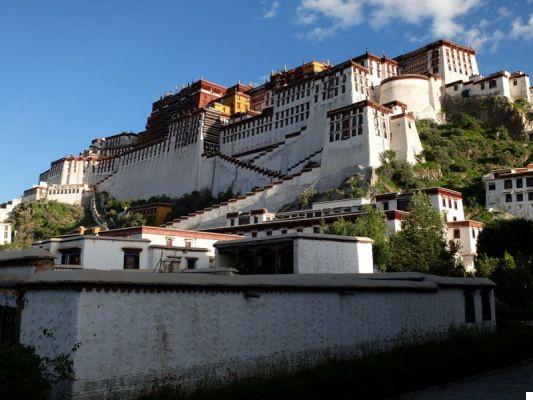

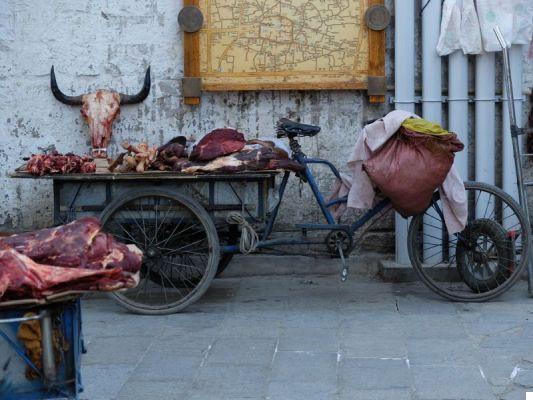
Yamdrok Yumtso Lake and the landscapes of the Himalayan plateau
Traveling in Tibet you can see breathtaking landscapes, lakes at 5000 meters and more in height, glaciers, mountains .. not a minute goes by when you are in front of a spectacle of nature. Beautiful it Yamdrok Yumtso Lake (or sacred lake), and the viewpoint that precedes the arrival at Everest Base Camp from which you can see (clouds permitting) 3 of the 5 highest peaks on the planet.
Gyangtse
Wandering around this town at sunset has particularly moved me. I felt like I was trapped in another century, in a dimension similar to the Lord of the Rings. To see there is a magnificent castle with a view (the Dzong) and the beautiful Pelkor Chode monastery. Don’t miss!!



His Majesty Mount Everest (8848 mt)
If I had been told as a child that I was going to Everest, I might not have believed it; for me it was a dream come true. Seeing the summit of Everest appear after 100 km of very tiring dirt road was a very strong emotion and I can hardly even describe it to you. Simply in that moment I felt like the queen of the world! I felt like the luckiest person on earth to be there and to be able to see the peak in all its glory, without clouds. It was also very nice to sleep in the tents at the Base Camp (5350 mt), under the cleanest and darkest sky that exists. If you don't suffer too much from the altitude, I absolutely recommend that you do it.







